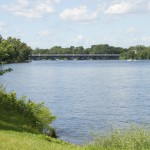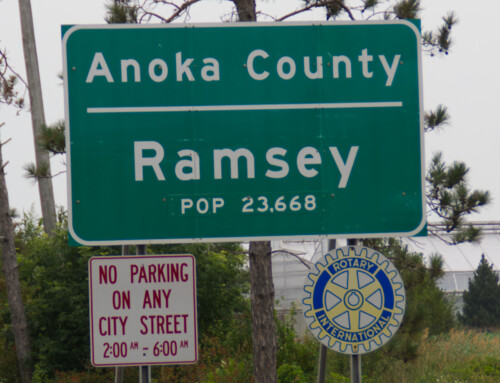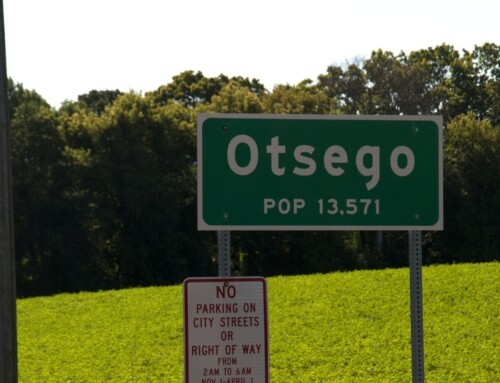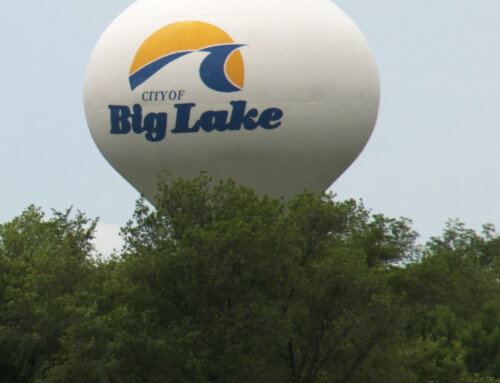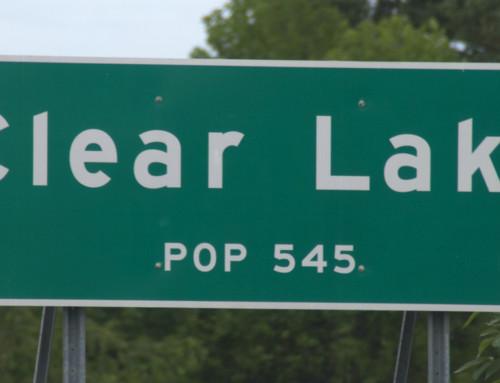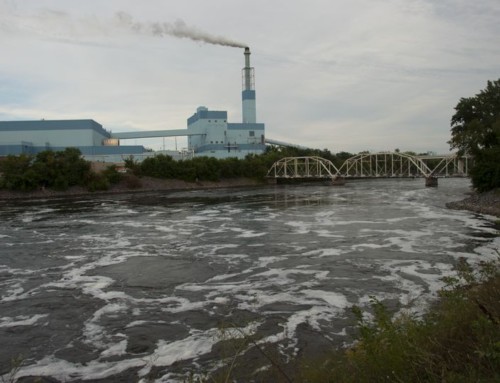Visitor Information
Direct your questions to the Anoka Area Chamber of Commerce (763.421.7130).
History
Champlin was founded by the triumvirate of Joseph Holt, Samuel Colburn, and John Cook. They named the village after John Cook’s wife, who was born Ellen E. Champlin. The Lane brothers built the first flour mill in 1867, but it was washed away by the Mississippi River in 1874. Like many area communities at that time, Champlin had a couple of sawmills to process wood coming down from the northern forests. Village residents could take a ferry across the river to Anoka before the first bridge was built in 1884; by 1888, residents could ride a streetcar instead.
The Free Baptist Church of Champlin was founded in 1854, becoming the Elm Creek Free Will Baptist Church one year later. Early services were held in a partially constructed steamboat that had been abandoned on the riverbank.
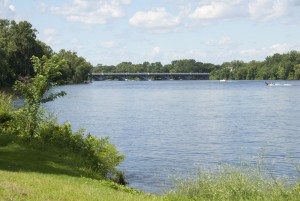
Mississippi River at Champlin
While New Englanders accounted for the earliest settlers, a group of Swiss immigrants from the village of Schwanden moved into the area not long after those Yankees. They first emigrated to New Glarus, Wisconsin, in 1854 but by the time they arrived, the only remaining land was too expensive, so they continued on to St. Anthony (Minneapolis). Soon after that they started a new community upriver near Champlin that they called New Schwanden. New Schwanden slowly faded away as residents assimilated into nearby communities; the only relics today are a cemetery and a marker erected in 1976 in Elm Creek Park Reserve.
A tornado ripped through the area in June 1939. Roy Sanderson, Robert Bonnell, and Robert Brown later said that they saw the tornado cross the Mississippi River and suck the water up and out so completely that they could clearly see the river bottom and several deadheads scattered there (cut logs lost to the river during the lumber boom).
For most of its existence, Champlin was a quiet rural village. As recently as 1970, it had fewer than 2,300 residents. As the Twin Cities population began to spread out from the center in the 1970s, however, Champlin grew rapidly, surpassing 20,000 residents by 2000.
Exploring the Area
The Mississippi National River and Recreation (651.290.4160) runs for 72 miles through the Twin Cities. While the National Park Service owns very little land along the corridor, it has many programs to help connect people to the river. Visit their website for a complete listing of places to enjoy the river.
Parks
- Donie Galloway Park (1333 Dayton Rd.)
- Mississippi Point Park (651 West River Rd.)
- Chandler Park (685 West River Rd.)
Entertainment and Events
Farmers Market
The area’s farming heritage continues today, and you can sample products at the farmers market that operates during the growing season in July (just kidding! Plants grow in August, too). In Champlin, the market is at the Ice Forum (Highway 169 N at 120th Ave.; 763.923.7163; W 9a-1p from July to mid-Oct).
Festivals
Champlin celebrates its existence with the annual Father Hennepin Days in early June, which features, among other events, a rubber ducky race.
**Looking for more? Check out Road Tripping Along the Great River Road, Vol. 1. Click the link above for more. Disclosure: This website may be compensated for linking to other sites or for sales of products we link to.
Where to Go Next
See the Twin Cities Overview for tips on regional festivals, getting around, and more.
Continuing downriver? Check out Brooklyn Park.
Continuing upriver? Check out Dayton.
Community-supported writing
If you like the content at the Mississippi Valley Traveler, please consider showing your support by making a one-time contribution or by subscribing through Patreon. Book sales don’t fully cover my costs, and I don’t have deep corporate pockets bankrolling my work. I’m a freelance writer bringing you stories about life along the Mississippi River. I need your help to keep this going. Every dollar you contribute makes it possible for me to continue sharing stories about America’s Greatest River!
©Dean Klinkenberg, 2013
